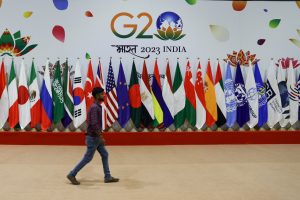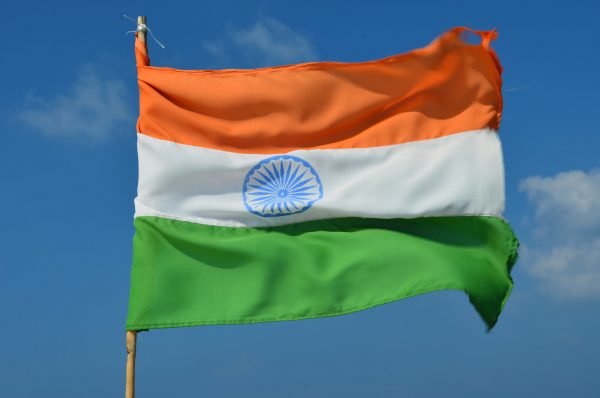G20 Summit Marks Another Step in India’s Steady Global Rise
Michael “MJ” King
Staff Writer
The long-held ground in which the US has rooted its economic and military hegemony has begun to tremble, and the rumbles of potential military conflict may soon escalate. The People’s Republic of China has challenged the United States’ global influence and economic power during the past decade. The fumes of tension have grown between the two superpowers, and a volatile trade war has flared both superpowers’ contest for geopolitical supremacy. Within this melting pot, the lava streams of stagnation and decline oscillate within the inner arteries of both nations. Whether this volcano erupts through economic means or all-out warfare, one country in the East stands to emerge from the ashes: India.
In 2021, India overtook the United Kingdom’s GDP, becoming the world’s 5th largest economy. This year, India landed an unmanned probe on the moon, becoming just the fourth nation to do so, something their former overlords have yet to accomplish. The British may have been the Empire on which the Sun never set, but India has symbolically eclipsed its ex-colonizer’s shadow. India is not merely gazing at the stars in the sky but reaching for them.
The primary stars India hopes to capture now are just beyond the Himalayas, on the emblem of its chief opponent in East Asia, China. The tides of demographics have shifted in India’s favor and are slowly awakening a sleeping giant. In June of 2023, India became the world’s most populous country, weighing in at 1.5 billion people, compared to China’s 1.4 Billion. According to the UN, the median age in India is just 28.5, as opposed to China’s 38.4; this means half of India’s population is under 30!
However, this also means that the government must invest in education, healthcare, and job opportunities to ensure this population can become a significant force for progress and innovation in the coming decades. A young and large population is excellent, but if they aren’t producing goods and services, this demographic will eventually lose value. Unfortunately, young people in India have been moving to more well-developed countries due to more advanced technologies, education, a standard of living, and more income. India has a lowly 28% productivity rate compared to China’s 48%. Simply put, less than 3 out of 10 persons in India actively contribute to the economy, which is not a recipe for success.
So, how does India get out of this issue? Two words. Foreign Investment. Over the last year, India placed third in foreign investments, growing a staggering 10%. The United States and the United Kingdom were the only two nations that surpassed India. In a decade dominated by investments in the Chinese market, India beating out their Eastern rivals is a sign of things to come. With fresh new capital arriving in the country, India is poised to take advantage of its young and vibrant people, who will be the engine that drives the country’s growth and development.

In the first G20 Summit hosted by India, the nation came out not guns, but words blazing. Up first on the agenda was not India’s interest but the world’s, carefully crafting a joint statement about the ongoing conflict in Ukraine. India demonstrated its ability to tussle with many friendly, hostile, or neutral opinions on Ukraine, condemning the “human suffering and adverse repercussions of the conflict in Ukraine on global food and energy security.” Regardless of personal stances, India did not push down the tips of justice. They did recognize the recklessness of Russia’s invasion so as not to hinder their negotiations with the West. However, to avoid potential backlash from Russia and China, they chose not to condemn the conflict openly. As the old French statesman Talleyrand once said, “Ah, the bells, ‘we’ are winning [and] I’ll tell you who ‘we’ are tomorrow.”
In doing so, India was able to strike a deal with the West on a continental spanning railroad, reaching from the Himalayas to the borders of the EU. As Saudi-Indian ties grow closer, this will grant India access to vast resources in the Middle East, which they can use to continue to rise through the economic ranks.
Guns, bullets, and steel do not dictate 21st-century warfare. Instead, economic might, strategic alliances, and international courtier-ship determine winners and losers, and no country has stroked the violin strings of the global power game better than India. The question for India is not if they have the potential to become a powerhouse but how. India understands that taking too far a seat on the jury of judgment in either direction is outside their geopolitical interests. Instead, the nation is simply monitoring both sides, understanding them, and allowing them to immerse themselves in conflict. Companies from aboard are as interested in maximizing India’s potential as the Indian government is, and incentivizing businesses, developing power plants, factories, machinery, technology, and opportunity can propel India past their Chinese competitors and, eventually, challenge the United States.
Contact MJ at michael.king2@student.shu.edu

